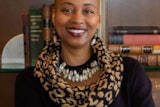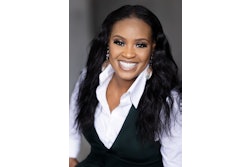WASHINGTON, D.C. — In a project hailed as a milestone in the nation’s history, President Obama joined celebrities, political luminaries and scholars Wednesday for the symbolic groundbreaking of the National Museum of African American History and Culture.
“This is a milestone moment not only for the Smithsonian but for the United States,” said actress Phylicia Rashad, who served as mistress of ceremonies.
“Today, we take the first step in creating an iconic building that will house something truly wonderful,” Rashad said. “A museum with the power to change hearts and minds and ultimately the nation.”
President Obama — who along with first lady Michelle Obama stayed on stage inside a tent at the site for almost the entire duration of the nearly two-hour event — said it was fitting that the museum found a home on the National Mall, a place that has witnessed events that range from the slave trade to the 1963 historic March on Washington.
“It was here that the pillars of our democracy were built, often by Black hands,” Obama said of the museum site, which is within the shadow of the Washington Monument.
“And it is on this spot — alongside the monuments to those who gave birth to this nation, and those who worked so hard to perfect it — that generations will remember the sometimes difficult, often inspirational, but always central role that African-Americans have played in the life of our country,” Obama said.
When the museum opens — as it is set to do in late 2015 — Obama said he hopes it will lead future generations to not see African-American history as something separate from the larger American story.
“I want them to see it as central — an important part of our shared story,” he said. “A call to see ourselves in one another.”
Wednesday’s ceremony represents the culmination of work that began when the National Museum of African American History and Culture was created by an act of Congress in 2003.
“My husband, President George Bush, was proud to sign it into law,” said former first lady Laura Bush, who serves on the council established to advise the Smithsonian’s Board of Regents on various issues relative to the museum, including its planning, construction and administration.
The former first lady said it was fitting that the museum be near the monument to the nation’s first president, whom she said fought for liberty and “recognized the evils of bondage” by decreeing in his will that all of his slaves should be set free.
The museum, which is operating on a budget of $15 million in fiscal 2012 and $75 million for construction, is being overseen by director Lonnie G. Bunch III.
It currently has some 25,000 artifacts — some of which are already on travelling exhibitions — shackles and bills of sale from the slave trade, Nat Turner’s Bible, Harriet Tubman’s hymn book, Louis Armstrong’s trumpet and Muhammad Ali’s headgear.
Dr. Richard Kurin, undersecretary for history, art, and culture at the Smithsonian Institution, noted how during the abolitionist era, the first secretary of the Smithsonian, Joseph Henry, refused to allow the great abolitionist orator Frederick Douglass to speak in a series of lectures the institution was hosting.
“He said, ‘I will not allow a Black man to speak in the rooms of the Smithsonian,’” Kurin recalled. “The irony is Secretary Henry’s most reliable staff member was Solomon Brown.” Brown was the first African-American employee at the Smithsonian, who worked in museum positions that ranged from general laborer to mapmaker.
“We can’t change what he said, but we can correct it,” Kurin said of the role of the new museum. “Frederick Douglass’ words will be heard within the rooms of the Smithsonian.”
Congressman John Lewis, D-Ga., sponsor of the legislation that created the museum, called the museum the “substance of things hoped for and validation of our dreams.”
“We must tell the story, the whole story, 400 years of African-American contributions to this nation’s history, from slavery to the present, without anger or apology,” Lewis said. “Make it plain, make it clear that there’s still a great deal of pain that needs to be healed. Stories told in this building can speak the truth that has the power to set an entire nation free.”















